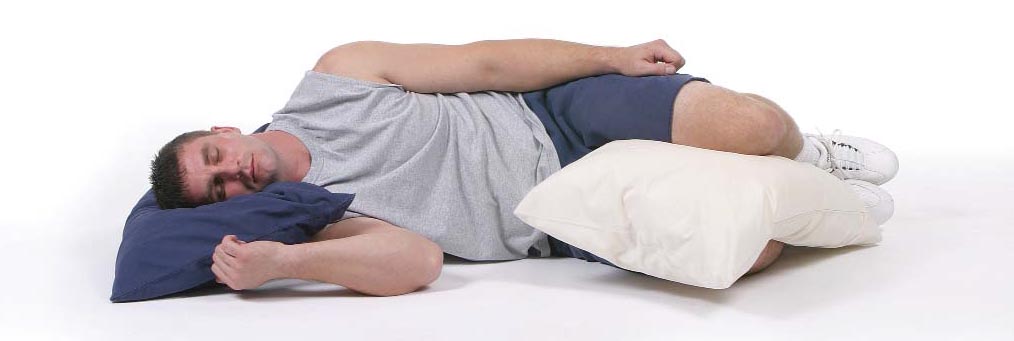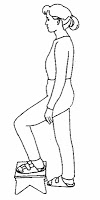Incorporating Proper Body Mechanics
By Pamela Guevarra,PT, DPT
AZOPT Physical Therapist
Often times, patients will ask me if the combination of physical therapy and exercise will be enough to heal their neck or back problems. Don’t get me wrong, treatment by a physical therapist and a specialized home exercise program contribute heavily and play a significant role in achieving your treatment goals. But is it enough? Not entirely. So then the question becomes, what more will help you achieve your goals and avoid future recurrences? The answer is proper body mechanics.
Proper body mechanics are certain positions of everyday activities that keep your spine and body properly aligned. This ultimately prevents symptoms like pain and stiffness in the spine. These positions are further recommended for people without back problems to help prevent stress on the spine, to help conserve energy, and keep you safe.
Our joints do not like staying in stretched positions for elongated periods of time. For example, think about a time when you felt pain or discomfort in your neck after painting the ceiling. Or a time when you awoke with stiffness in your neck or back after sleeping on your stomach with your head fully rotated to one position throughout the night. Maybe your neck started getting tired after sitting at your computer with the neck and trunk flexed. All of these examples, and others, will cause stress on your spine, which leads to pain and potentially degenerative joint disease.
So let’s talk about ways in which you can help achieve proper body mechanics in your everyday life. There are sometimes multiple ways of doing certain activities. Choose the best option for you. If these options do not work with for you, consult your physical therapist for other options.
Sleeping.
- Your bed should be firm and not sag.
- Your pillow should not be too big that your head is bent forward or too small that your head is extended backward. Thus, you head and neck should align with the spine.
- While sleeping, the pillow should only support your head and neck and not your upper back.
- Try to avoid sleeping on your stomach with your head fully rotated to one side.
- Instead sleep on your side or back or ¾ stomach using a body pillow.
- It may take some restless nights of sleep to get used to sleeping on your back or side.
To sleep on your side:
- Place 1 or 2 pillows between your legs in such a way that the top leg is supported to prevent it from pulling the spine in rotation; OR
- Sleep on your side with a small rolled towel under the waist to prevent sagging of the spine on the waist area.
To sleep on your back
- This is the safest method if you have night pain.
- Place a pillow under your knees placing the low back in a neutral position; OR
- Place a small rolled towel under your lower back helping it maintain its curve.
Sitting
Things to remember:
- For long periods of sitting, try to stand up at least once an hour to relieve your spine.
- Ensure that when seated, your hips are higher than your knees.
- In most cars, the driver’s sit with their knees higher than the lower back, which causes a lot of stress on your spine, especially during long drives for people with neck or lower back problems.
Here are some tips to assist your seated posture:
- Fold a pillow lengthwise or roll a large towel and place it on the back half of the seat so when you sit on the chair, your hips are higher than your knees. This places your pelvis in a neutral position which in turn helps correct your posture.
- If it is not possible to place a rolled towel or a folded pillow on the seat, sit astride a chair and place feet under the chair. An alternative if you need to study or have to work over a desk is to sit at the edge of the chair and then bend your knees and put your feet under the chair.
Standing
Things to remember:
- Avoid standing in one position for a long time. It relieves the stress not only on your spine, but it also helps with the circulation on your legs.
What to do:
- For prolonged standing, place your foot up on a stool and alternate your legs if possible.
- In front of your sink, you can open the bottom cabinet and place your foot in there.
Lifting and carrying
- Check the distance to transfer the object so you can plan accordingly.
- Assess the weight of the object so you can decide if you need to use 1 or 2 arms/hands to lift an object or if you need assistance.
- Remember to widen your base of support by separating your legs, making sure you bend at your hips, not your trunk.
- Objects should be as close to your body as possible.
There are two ways to lift an object:
- When picking up small objects from the floor or lower areas, remember the golfer’s lift: place one foot in front of the other, while holding on to something for balance and support, and kick the back leg up while reaching. This will keep the spine in a neutral position.
- To pick up a heavy item, squat, placing yourself close to the item, keeping your back straight and lift with your legs. Do not lift and twist your body in a bent position. If possible, stagger your stance – positioning one foot in front of the other before you lift – so you can easily take your first step.
Household Chores
Vacuum and mopping
Walk with the vacuum or mop, keeping them close to your body to avoid reaching and protect your back.
Cleaning high areas
When cleaning something high like a tall window or trying to retrieve an item from a high shelf, avoid reaching up. Find and use a step stool to raise yourself high and be safe.
Practice and repetition are keys to incorporating proper body mechanics into everyday home and work activities. The mix of treatment by a physical therapist, a specialized home exercise program by your physical therapist, and proper body mechanics will help you achieve your goals in physical therapy. While the treatment and exercises will work to improve your flexibility, range of motion and strength, proper body mechanics will make all of this easier.
As always, consult a licensed physical therapist at AZOPT if you begin to have problems with your neck or back. We will help you with the appropriate body mechanics that you will need in your everyday and work activities based on your specific condition.










